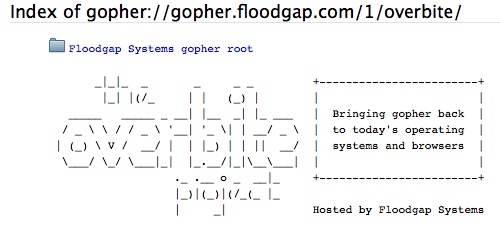
If you spend any amount of time using the Internet as we know it today, chances are you have suffered some inconvenience from the variety of interpretations of the various “standards” used to create the web. Every web browser renders web pages slightly differently; some Flash content isn’t compatible with older versions of Flash (and some versions of Flash aren’t supported on some operating systems at all!), etc. If you make your living creating web content, all of those problems may be amplified several times. Doesn’t it make you long for a real standard, where content is king, and presentation of said content is the same, regardless of whether you’re shopping for shoes or looking for an academic journal? The Gopher protocol, created in the early 1990s, had all that, and it ain’t dead yet!
Ars Technica has a nice retrospective of the Gopher protocol. It’s a no-nonsense information presentation mechanism that places content squarely at the forefront. No pictures-of-text or confusing and inconsistent navigation elements to slow you down: navigating one Gopher site is the same as navigating any other Gopher site.
Firefox provides native support for the Gopher protocol, and the Overbite project provides an enhanced add-on for Firefox, as well as an Adobe AIR standalone Gopher client. Old protocols die hard, I guess. There’s even a Twitter-over-Gopher solution (although everyone knows that Twitter-over-IRC earns more geek points).
I used Gopher at my university’s library, where the entire card catalog was indexed in a Gopher space. It was, at the time, remarkably obtuse and hard to use; but then again I was still fighting SLIP connections on my home dial-up to access the “Internet”. Everything was a little kludgey back then.
Given Gopher’s limited resurgence in popularity, what kind of Gopher site would you create today?